Benefits of Malasana (Garland Pose) and How to Do it
By Dr. Ankit Sankhe +2 more

Get,

to manage your symptom
Get your,


4 Cr+ families
benefitted

OTP sent to 9988776655



You’ve successfully subscribed to receive
doctor-approved tips on
Whatsapp

Get ready to feel your best.

Hi There,
Download the PharmEasy App now!!


Register to Avail the Offer
Send OTPBy continuing, you agree with our Privacy Policy and Terms and Conditions

Hi There,
Sign up on PharmEasy now!!
Trusted by 4 crore+ families

OTP sent to 9988776655



You have unlocked 25% off on medicines




Code: NU25
By Dr. Ankit Sankhe +2 more
Table of Contents
Daily yoga practice at home may help you stay healthy, productive, calm, and joyful throughout the day. According to yogic texts, practicing yoga indicates a complete balance between the mind and body and between man and the environment. As a result, yoga helps overcome all forms of suffering to achieve freedom. Asanas create physical and mental stability and give the discipline and strength to maintain any posture. Malasana is one such beginner-level yogasana1. Let’s find out more about malasana.
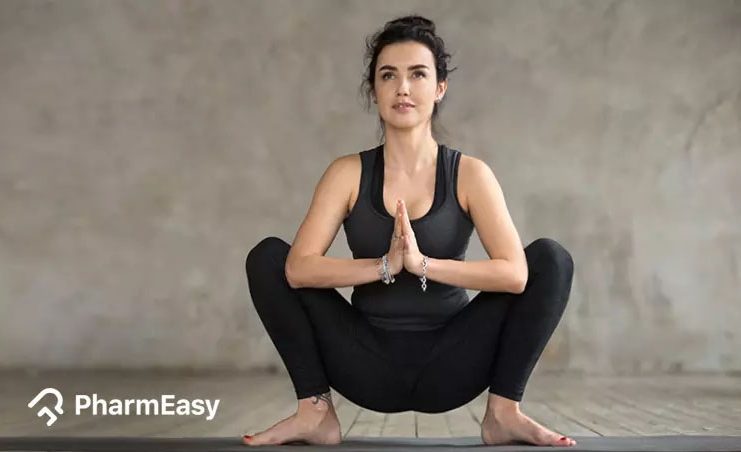
Did You Know?
Malasana is also known as garland pose or squat pose2.
Malasana combines the Sanskrit words “Mala” and “asana,” which both mean a garland or necklace. The three asanas that prepare you for malasana are tadasana, naukasana and padhastasana. After doing malasana, we can do any yoga asana except chakrasana, halasana and plank. In addition, there are some variations of malasana, which involve the use of a chair or a wall for support.
Malasana is performed as follows:
Let us go into more detail about malasana starting with its benefits.
Malasana benefits are as follows:
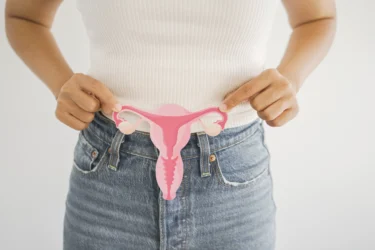
PCOS is a condition that occurs in women and is caused by hormonal abnormalities. Obesity, hormone imbalance, stress, anxiety, and other mood-related problems are some of the most common symptoms of PCOS. Yoga asanas like the garland pose may improve relaxation, well-being, and productivity. It may also help in achieving hormonal balance3. This may relieve the symptoms of PCOS by encouraging a positive perspective on life2. However, rather than relying just on malasana, you should consult a doctor and seek treatment for this condition.
Asanas like Bhujangasana, Malasana, Usthrasana, Baddha Konasana, and Dhanurasana, may assist to relieve pain and discomfort related to menstruation. From my knowledge, Malasana is known for strengthening the lower abdominal (pelvic) muscles. This may help in menstrual irregularities6.
Dr. Siddharth Gupta, B.A.M.S, M.D (Ayu)
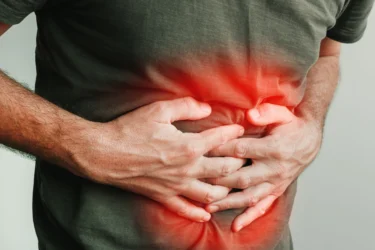
Malasana yoga pose might help stretch the stomach and the lower portion of the body. It may also improve intestinal function. So, it might be helpful in the elimination of waste products from the body3. As a result, garland pose yoga might be beneficial for constipation. For best results, please get medical advice before performing the malasana pose.
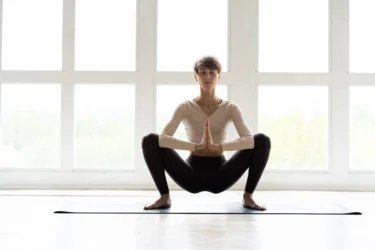
Malasana may help open up the hips. Additionally, it might stretch the area of the hips and inner thighs. It may be beneficial to stretch the lower body essentially. It might also relieve tension from the thigh and neck region2,3. However, the promising results of malasana as a hip opener need to be explored further. To avoid complications, kindly consult a physician.

When the malasana is performed, you must keep your back or spine straight. It might also help enhance the spinal column’s flexibility. As a result, malasana or garland pose might help to reduce lower back pain2. Malasana may also help correct your posture1. However, don’t rely on malasana for relief of back pain, as it can cause side effects. So, please visit a doctor for proper therapy and try this under the supervision of a trainer.
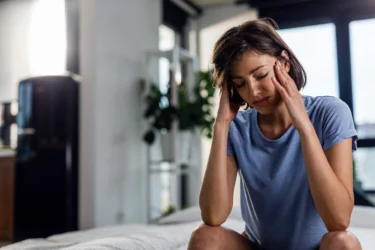
The garland posture may help calm the central nervous system. Additionally, it might improve focus, concentration and balance. This may help to reduce an individual’s stress1. However, for better health outcomes, please visit your doctor and do this asana under the guidance of your trainer.
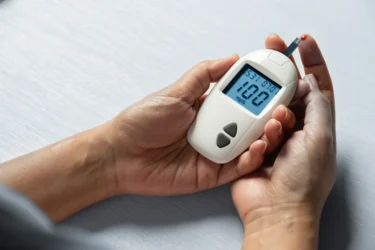
Metabolic syndrome (MetS) is a disorder linked to diabetes and cardiovascular disease. Supriya et al., 2017 discovered4 that yoga poses like malasana can help reduce proinflammatory adipokines. Adipokines are produced by adipocytes which are associated with blood pressure management. Adipokine balance is essential as it is known to be the regulator of Met S. In this way, malasana may help manage metabolic syndrome as well as diabetes and high blood pressure4. However, please get medical advice for better health results and perform this asana with a trainer’s supervision.
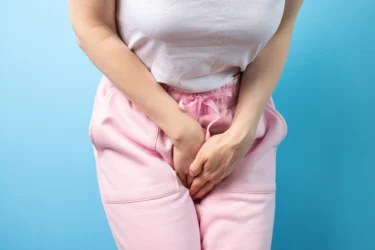
The inability to regulate urine leakage is referred to as urinary incontinence. In a study5 by Alison et al., 2014, women with urinary incontinence were examined with six weeks of yoga therapy. The results showed that malasana improved urinary incontinence in middle-aged and older women. Malasana yoga may also enhance and maintain lower body balance, strength which was seen in Alison’s study. Malasana may help reduce stress, anxiety and autonomic nervous system dysfunction, which will help with urine control. It may also help with urinary tract infections in women5. However, kindly consult the doctor for diagnosis and treatment. In addition, it would help if you practised the malasana under the guidance of the trainer.
Also Read: Benefits of Rajakapotasana (King Pigeon Pose) and How to Do it By Dr. Himani Bisht

Some of the garland pose yoga benefits are:
Yoga practice may help develop the mind and body; however, it is still not an alternative to modern medicine. You must not rely on yoga alone to treat any condition. Please consult a qualified doctor who will be able to assess your condition correctly and advise accordingly. Moreover, it is necessary to practice and learn yoga under the supervision of a trained yoga teacher to avoid any injuries.
I recently read an article which suggests that regular practice of Malasana may increase one’s libido. Malasana is known to strengthen the abdominal muscles and may increase the blood circulation towards the abdomen3.
Dr. Rajeev Singh, BAMS
With the guidance of a qualified and experienced yoga teacher/yoga expert, we can access and analyse the risk factors and continue to practice exercise with precautions.
Also Read: Benefits of Shashankasana (Rabbit Pose) and How to Do it By Dr. Himani Bisht
Yoga is a scientific way of life that promotes the balance of all parts of the human body. Malasana, or the garland pose, is a yoga asana with several benefits, such as stretching the stomach, thighs, pelvis region and spine. It is especially good for women as it helps in UI, PCOS and pelvic health in general. However, if you feel pain while performing the malasana, kindly consult the doctor.
Also Read: Benefits of Pranam Asana (Prayer Pose) and How to Do it By Dr. Himani Bisht
Malasana stretches the pelvis region, inner thighs and hips and strengthens the thighs. It may prepare the body of pregnant women for birth1. Even so, it is not advisable to practise malasana during pregnancy without a proper consultation from your doctor. Do this asana under the guidance of a qualified yoga trainer.
No. However, before performing malasana, please see your doctor and practise this asana under the supervision of a trainer.
No. However, more research is needed to prove the effects of malasana on hair.
Malasana may help tone and stretch the abdominal muscles3. Although, more research is required to prove the benefits of malasana for the abdomen. Kindly consult the doctor for better health results.
No. Although, more research is required to determine the effect of malasana on vision.
Disclaimer: The information provided here is for educational/awareness purposes only and is not intended to be a substitute for medical treatment by a healthcare professional and should not be relied upon to diagnose or treat any medical condition. The reader should consult a registered medical practitioner to determine the appropriateness of the information and before consuming any medication. PharmEasy does not provide any guarantee or warranty (express or implied) regarding the accuracy, adequacy, completeness, legality, reliability or usefulness of the information; and disclaims any liability arising thereof.
Links and product recommendations in the information provided here are advertisements of third-party products available on the website. PharmEasy does not make any representation on the accuracy or suitability of such products/services. Advertisements do not influence the editorial decisions or content. The information in this blog is subject to change without notice. The authors and administrators reserve the right to modify, add, or remove content without notification. It is your responsibility to review this disclaimer regularly for any changes.
Comments

Leave your comment...
You may also like
Comments